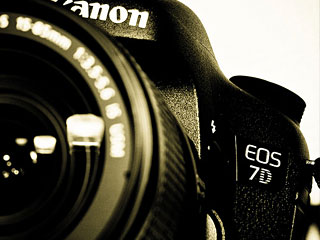
Photo by Axel Bührmann. (Used under Creative Commons license.)
Earlier this month I had the opportunity to spend some testing time with a collection of Canon 5Ds and 7Ds that belong to one of my clients. I learned a couple of thing that others may find useful.
- Formatting cards
The format of the cards is different in the 5D and 7D. Each of the cameras will read and write to a card formatted on the other model but it appears to be ill-advised. The differences slow down the write performance on either camera, the 7D in particular. The write performance, as evidenced by the “busy” bar on the display, definitely improves if the card is formatted directly on the camera it is intended for. We discovered this as were were switching cameras for lens testing and wanted to keep the files on the same card.
On a related note, just deleting files on a PC or Mac is also a bad ideal. Files on the flash media do not appear to actually get deleted, rather they are marked as deleted in the directory and the clusters can be reused. This causes old style file fragmentation on the card and appears to degrade write performance.
- Card speed and type
The cards we were using on the shoot were fast but they were not UDMA cards. UDMA cards, in addition to being simply faster, also perform some of the disk io operations directly on the card. The standard cards do not do this so the CPU in the camera has to this work. This can increase the risk of overheating and in the worst case stall the camera. We tested outside in the bright sun and were able to repeatedly overheat cameras with non UDMA cards that performed fine when a UDMA card was substituted. This is particularly important on the 5D. It was also very evident when running in 60p for slo-mo on the 7D.
The performance difference also shows up in still frame motor drive mode. In the 5D we got 3 frames per second with the slow cards and 3.9 with the UDMA cards. On the 7D we got 6.5 frames per second on the old cards and the full rated 8 frames per second with the UDMA cards.
So, buy UDMA cards for video and save non UDMA cards for audio recording or low frame rate still photo use.


Got something to add?